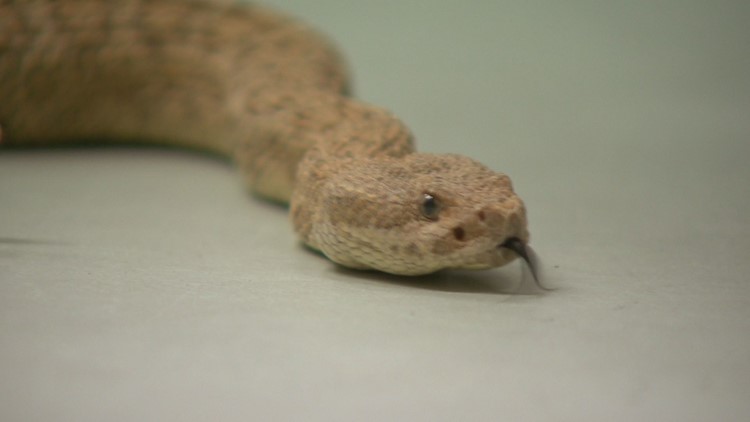KUSA — Decades ago, Stephen Mackessy was bitten by a snake.
He was only 13 years old, living in southern California. He admits, he mishandled the animal. But he survived to tell the tale.
“I was in the hospital for six days, my arm swelled up about double to the shoulder,” he said.
That experience didn’t seem to scare him away.
A few years later, a high school job put Mackessy with snakes again.
“I worked for a company that imported and exported things from all over the world,” he said. “And my job was to take care of the venomous snakes. And we had every venomous snake you could possibly imagine.”
Mackessy went on to study biology in college and built his career around researching snakes and their venom. Today, he is a professor at the University of Northern Colorado. And his current research includes studying how venom varies between different snakes and different geographical locations, and how the venom can be beneficial to humans fighting deadly diseases, like cancer.
“As we’ve gone into taking the venoms apart, we’ve also asked questions – how can we develop some of these toxins for uses in potential therapeutics,” he said.
“We started working with several rattlesnakes to isolate a particular small compound from the venom that doesn’t kill cancer cells, but instead causes them not to disperse and metastasize through the body,” he continued. "That's where cancers can become particularly dangerous as they spread… away from a tumor site and then spread throughout the’ body.”
With the help of a PhD student, Cara Smith, Mackessy demonstrated how his team extracts venom from a snake. He pins the snake and careful holds it by the head. Then Smith places two small tubes on the snake’s fangs to capture the venom.
Mackessy said snake venom is already being used to develop other kinds of drugs, and to treat diseases like diabetes and high blood pressure.
The team stores the snake venom in the lab, where Mackessy has samples dating back decades. They also have cancer cells stored for research, too.
“There’s a good reason to think we should keep these animals around, because they are dangerous to us if they bite us, but on the other hand that venom may contain very important therapeutic molecules,” he said.
“Ideally, we’d like to find something that’s really is quite effective and non-toxic for treating cancers and really minimizing their effects on a patient.”



